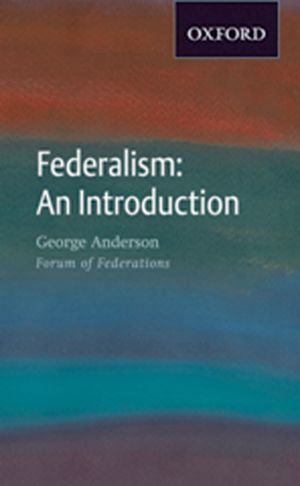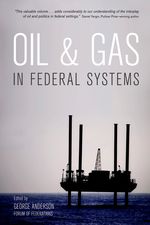The reports on this page provide a broad overview of decentralization and federalism, including power-sharing, distribution of powers, subnational units, natural resources and fiscal issues.
Selected Materials
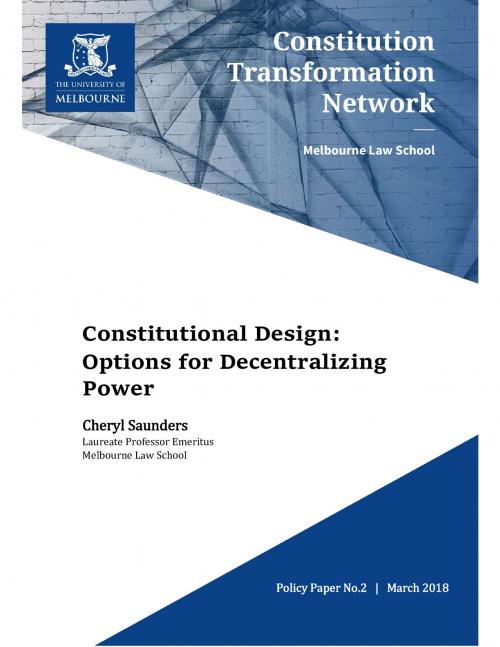
This Policy Paper from the Constitutional Transformation Network discusses the ways and degrees to which a state can decentralize its government functions.
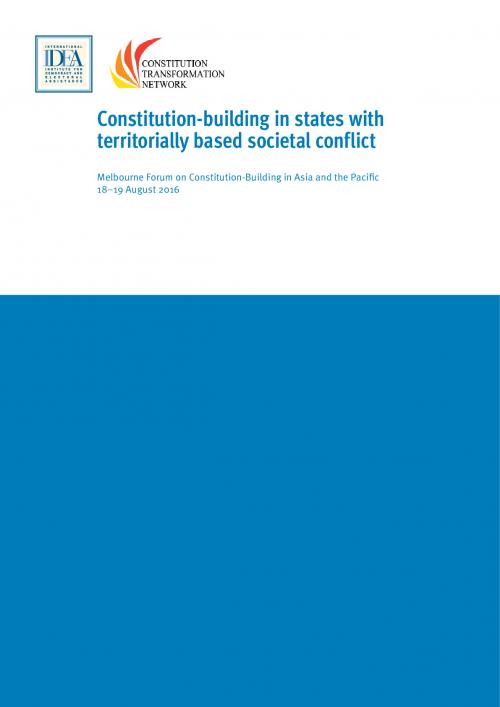
This report from the Melbourne Forum on Constitution Building in Asia and Pacific provides an overview of the different forms of decentralization exhibited in constitutions across a number of Asia and Pacific states.
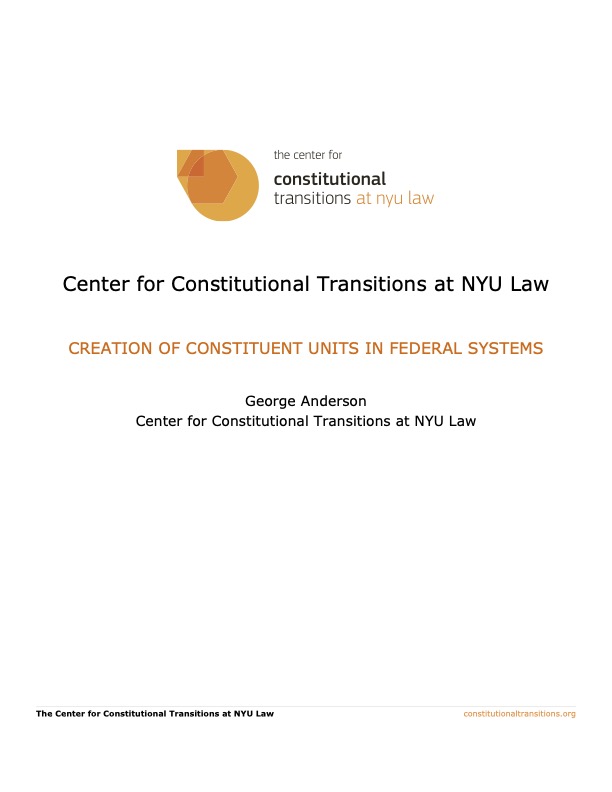
These papers and resources looks at the experiences of over 20 federal and quasi-federal countries in defining new CUs. It examines both the issues around CU definition during a period of constitutional transition as well as the rules that have been developed for the incremental creation of new CUs once a federal constitution has been adopted. Some lessons are drawn regarding approaches to timing of CU definition, criteria, decision-making processes during transitions and longer-term rules that may be appropriate in different contexts. The series includes three papers: (1) a longer paper on the creation of constituent units; (2) a shorter practitioner's guide on the creation of constituent units; and (3) a power point presentation on the creation of constituent units.
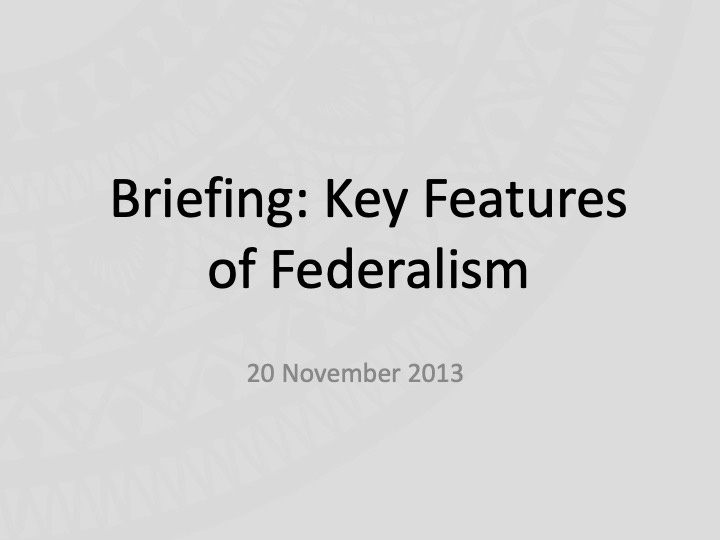
This is a presentation on federalism. It provides an overview of how federalism exists in the world today, along with a description of characteristics common to federal states, some features of the central institutions, some lessons learned with regard to sub-national units, including how they are to be defined, how to allocate powers between the levels of government, including how to allocate fiscal powers and powers related to national resources, how to manage intergovernmental relations generally, and finally how countries can transition to federalism.
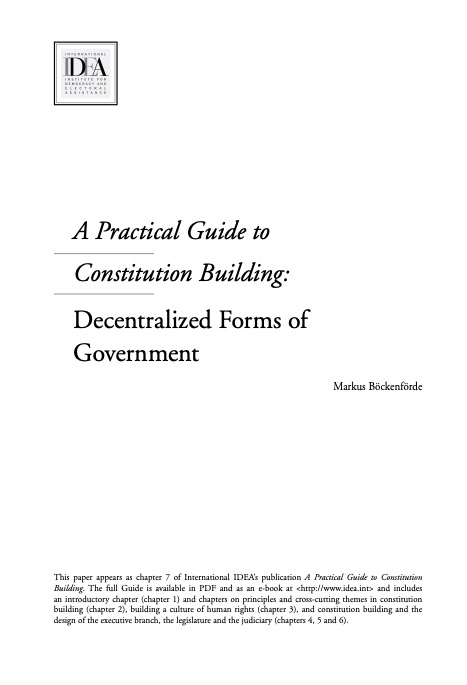
This paper appears as chapter 7 of International IDEA’s publication A Practical Guide to Constitution Building. It focuses on decentralization. The paper starts by defining decentralization as a territorial concept, or the dispersal of governmental authority and power away from the national centre to other institutions at other levels of government or levels of administration. It then identifies the two main objectives of decentralization as increasing efficiency in providing governmental services, and providing greater representation to minority groups. Next, the paper discusses the components of decentralization, which it categorizes as either formal or substantive. The report then highlights the importance of national and regional context with regard to the success or failure of decentralization, and finally, it addresses specific design options. In discussing these options, the paper identifies the following design questions: the number of levels of government, determination of the depth of decentralization (meaning identifying the powers that may be dispersed to lower levels of government), and the legal safeguards for decentralized governments (meaning the legal checks and balances concerning who has the power to change the system of decentralization).
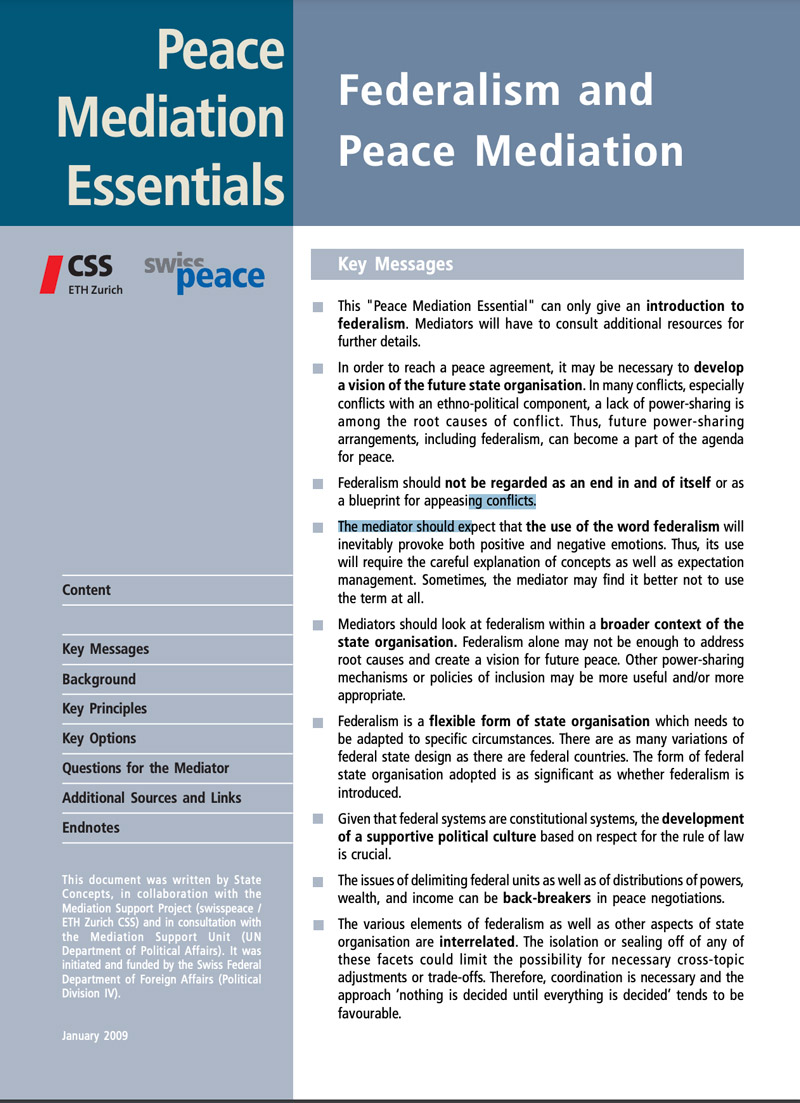
This document is intended to provide peace mediators with an introduction to the concept of federalism. In order to reach a peace agreement, it may be necessary to develop a vision of the future state organisation. This document describes federalism as a flexible form of state organisation which needs to be adapted to specific circumstances. The issues of delimiting federal units as well as of distributions of powers, wealth, and income can be vital in peace negotiations. The document includes a number of questions for the mediator to consider in this regard.

This manual from the Max Planck Institute surveys various aspects of decentralization and federalism. Topics include the range of federal systems, asymmetric federalism, distribution of powers, participation of subnational units on the federal level, fiscal federalism, and federalism as a conflict-management device. Case studies of power sharing, the bicameral system, the judiciary, dispute resolution, and fiscal federalism are provided.
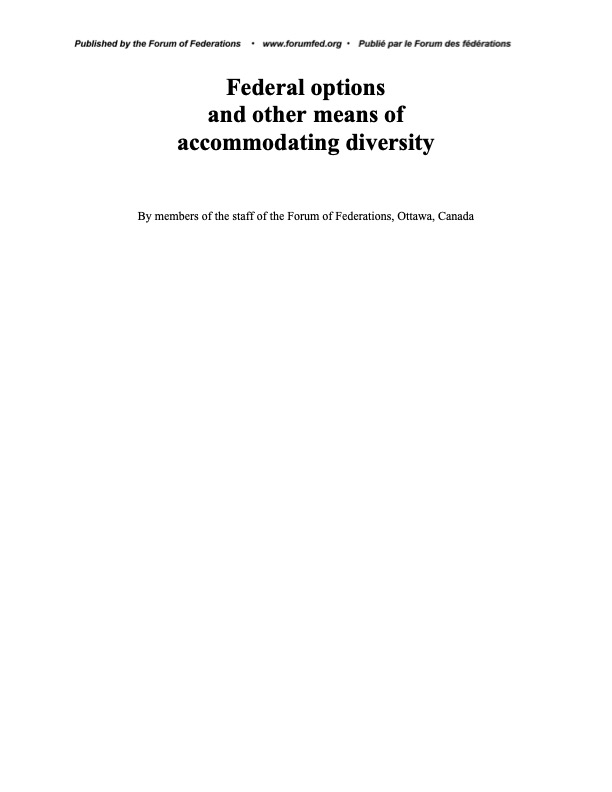
This paper is aimed at assisting persons engaged in nation-building, particularly in post-conflict states. Specifically it is meant to provide insight and examples into the ways and means of recognizing and accommodating multiple national groups living in a specific country. The paper highlights the ways in which ethnic diversity may present itself and the possibility of various groups not being geographically concentrated. The paper then canvasses the variety of means a country can use to address diversity, including: minority language and cultural rights, assimilation, exclusion and integration, and devolution. The last part of the paper looks at federalism in detail and how it accommodates diversity. Specifically, the paper highlights the characteristics of federal constitutions, basic features and division of roles and responsibilities between orders of government, areas of cooperation between orders of government, representation of constituent units at the federal level, the guarantee of rights for minorities, the utility of asymmetrical federalism, the possibility of secessionism, and the use of a neutral referee (i.e. the courts) to resolve any disagreement. The paper ends with a series of questions to be asked when considering how to craft institutions to accommodate ethnic diversity.
Fiscal Federalism and Natural Resources
This short book provides a non-technical overview of fiscal federalism, drawing on the fields of economics and political science.
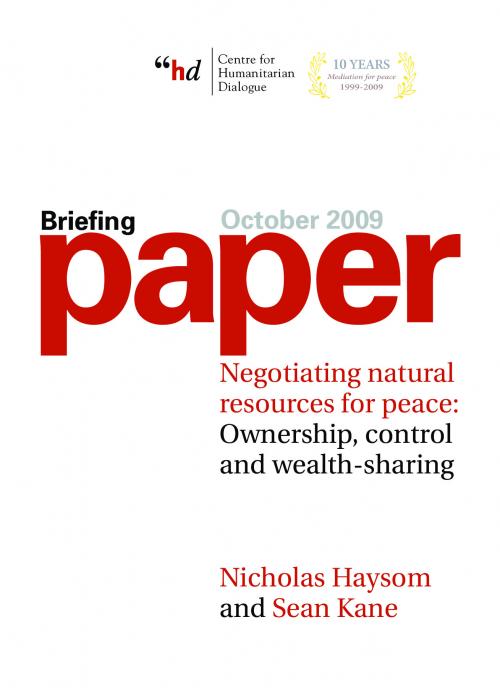
Given the importance of natural resources and their potential to generate conflict, this paper presents a conceptual framework for natural resource negotiations within a single, all encompassing event (like constitution-making processes). Part 2 of the paper examines the importance of using the constitutional framework for dealing with natural resources. Parts 3-5 sets out some of the substantive issues to be dealt with regarding constitutionalizing natural resources. Part 3 looks at the ownership of natural resources, part 4 then deals with the allocation of control over natural resources, and part 5 of the report deals with the treatment of natural resources revenue. These parts take on the same structure in each section: they provide general comments on the issue, describe the constitutional practice with respect to the issue, and describe how federations and/or states with autonomous regions deal with the issue. Finally, each section includes a table setting out examples from around the world. Part 6 then provides insight into some considerations for the negotiation process, including among other things: when to address natural resources in the constitution-making process, and in what detail, as well as who should be at the table, and in what capacity. Part 7 of the report offers concluding remarks highlighting the importance of a legal framework to deal with such an complex and emotionally charged issue. The paper appends at the end case studies for Sudan, Indonesia, and Iraq.
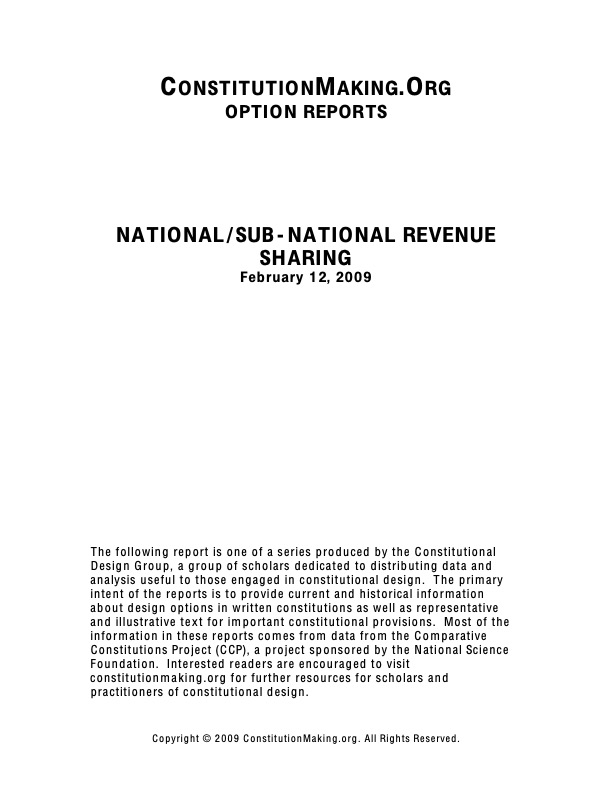
This option report compares constitutional provisions related to the relative powers of national and sub-national governance concerning the use and distribution of funds. The sample of constitutions reviewed consists of almost 600 constitutions enacted since 1789. In addition to detailing the trends with regard to such revenue sharing, the report provides sample constitutional provisions, including, but not limited to those from traditionally federal states.
This report provides practical guidance for designing fiscal arrangements in new and emerging federations. The report addresses responsibilities for public spending, responsibilities for raising revenue, managing the economy, and dealing with fiscal imbalances between governments. Examples are drawn from Australia, Canada, Germany, and the United States.

